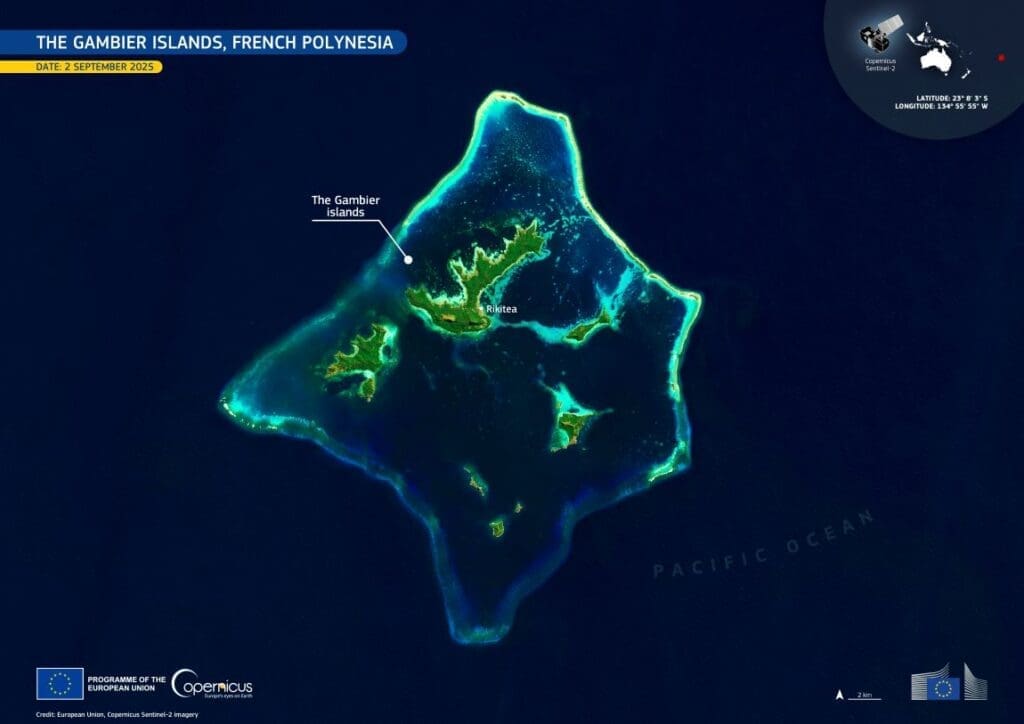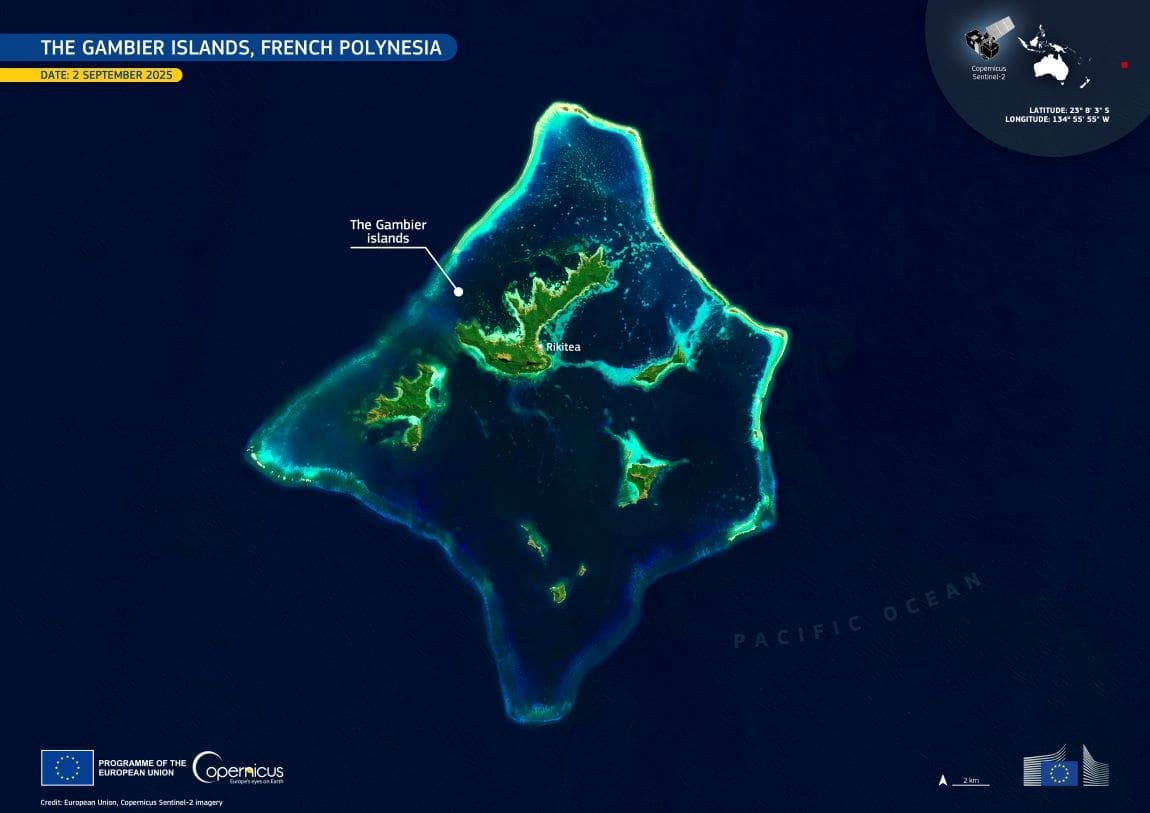Far out in the South Pacific Ocean, the remote Gambier Islands lie scattered like emeralds across a wide turquoise lagoon. These volcanic islands, fringed by coral reefs, are part of French Polynesia and are home to rich marine life and long-standing cultural traditions. Their surrounding waters have now become the heart of an ambitious conservation effort that has captured global attention.
At the UN Ocean Conference held in Nice in June 2025, Moetai Brotherson, the president of French Polynesia, announced the creation of a vast protected marine area called Tainui Atea. Spanning more than 4.5 million square kilometres and encompassing almost all French Polynesian waters, it has become the largest marine protected area in the world. Within this expanse, 1.1 million square kilometres have been placed under strict protection, including two fully protected zones where all potentially harmful activities are banned and more than 180,000 square kilometres reserved for small-scale, traditional fishing.

This newly protected area surrounds the Gambier Islands, whose intricate reef systems can be seen in this image acquired by one of the Copernicus Sentinel-2 satellites on 2 September 2025. The islands’ brilliant blue lagoons and pale reef shelves stand out from space, offering a striking view of the habitats that these measures aim to safeguard. The Copernicus Marine Service uses data from these satellites to monitor changes in ocean conditions, supporting the design of sustainable marine policies worldwide.
The protections come at a time when ocean ecosystems face growing pressure from pollution, overfishing and the impacts of climate change. French Polynesia’s waters are among the most biodiverse on Earth, supporting 21 species of shark, 176 species of coral and more than 1,000 species of fish. By removing damaging practices such as deep-sea mining and bottom trawling from these waters, the new designation is expected to allow populations to recover and spill into surrounding areas over time, increasing marine abundance across the region.
For local communities, the decision carries cultural as well as ecological significance. A recent survey of 1,378 French Polynesians found that 92 percent support new marine protected areas, seeing them as a way to revive traditional management practices and safeguard cultural values. The initiative also advances the targets of the Kunming-Montreal Global Biodiversity Framework, which aims to protect 30 percent of the world’s lands and waters by 2030. The creation of Tainui Atea alone has raised the global share of protected marine waters by 1.25 percent, to 9.85 percent.
French Polynesia’s move has been welcomed by conservation groups and highlights the leadership role that Large Ocean States can play in protecting biodiversity on a global scale. As efforts now turn to ensuring that Tainui Atea is effectively managed, the Gambier Islands stand as a vivid reminder of what is at stake – a living mosaic of reefs, fish and cultural heritage set in the heart of the Pacific.
Featured image credit: European Union, Copernicus Sentinel-2 imagery




